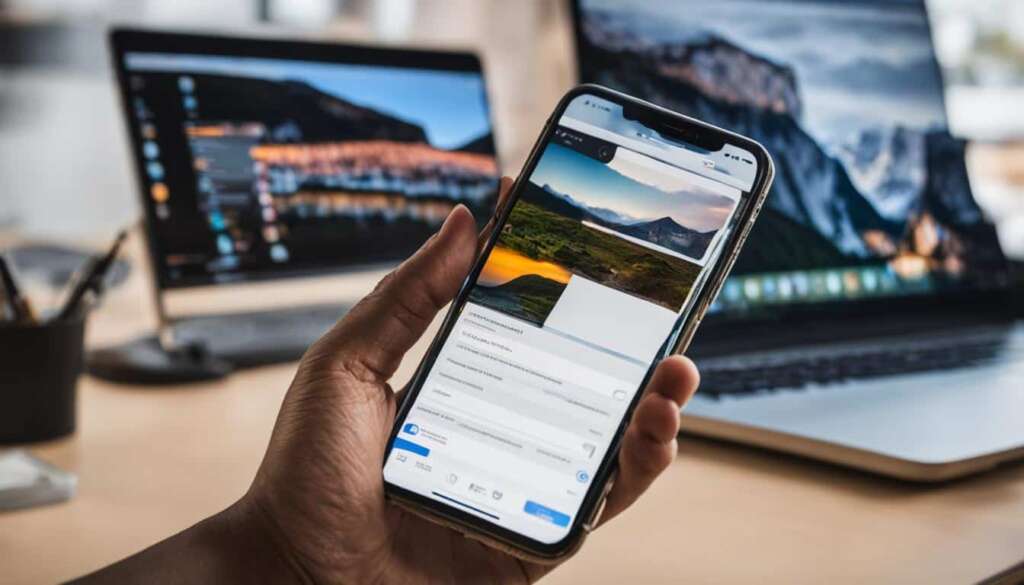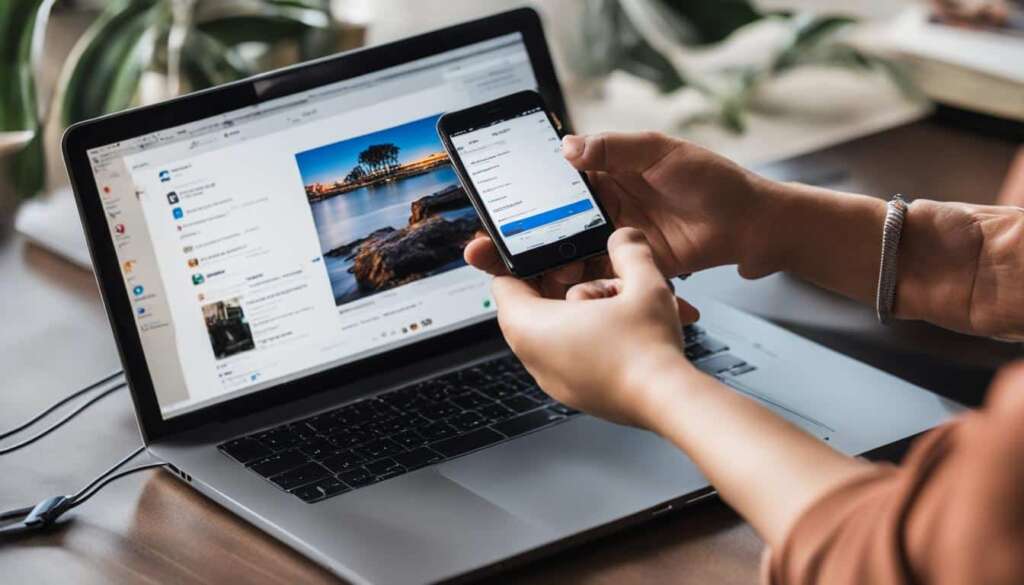Table of Contents
Are you looking for a hassle-free way to backup your iPhone data to your computer? Look no further! In this article, we will guide you through the step-by-step process of backing up your iPhone to your computer using the best methods available. Whether you prefer using iTunes, Finder, or even third-party software, we’ve got you covered.
Backing up your iPhone is crucial for ensuring the safety and security of your valuable data. With a local backup on your computer, you can rest assured that your files, contacts, photos, and more are protected in case of device loss or software issues. Plus, having a backup allows you to easily restore your iPhone to its previous state whenever needed.
So, let’s dive into the different methods of backing up your iPhone to your computer and discover which one suits you best!
Key Takeaways:
- Backing up your iPhone to your computer is essential for data preservation and security.
- Apple recommends having both an iCloud backup and a local backup for added protection.
- You can backup your iPhone to your computer using iTunes or Finder on a Mac, or iTunes on a Windows PC.
- If you prefer alternatives to iTunes or iCloud, third-party software like MobileTrans can be a user-friendly option.
- Consider your needs and preferences when choosing between cloud storage and local backup methods.
Why Backing Up Your iPhone is Important
Backing up your iPhone is not just a simple precaution, but a crucial step in safeguarding your valuable data and memories. In today’s digital age, our iPhones hold a wealth of information – from precious photos and videos to important contacts and documents. Imagine the devastating loss of these files due to device loss, damage, or software issues. By creating regular backups, you can prevent data loss and easily restore your iPhone to its previous state.
One of the key advantages of backing up your iPhone is the secure data backup it provides. With a backup, even if your iPhone gets lost, stolen, or damaged beyond repair, your data remains safe. You can simply restore the backup to a new or repaired device, ensuring that your files are not lost forever. It’s like having an insurance policy for your digital life, giving you peace of mind.
Data loss prevention is another significant reason to back up your iPhone. Accidental deletions, software glitches, or even a failed software update can lead to the loss of important files or contacts. With a recent backup in place, you have the ability to restore your iPhone and retrieve everything you thought was gone forever. It’s a simple and effective way to protect your information and avoid the heartache of losing cherished memories.
“Backing up your iPhone is not just a simple precaution, but a crucial step in safeguarding your valuable data and memories.”
Whether it’s for personal or professional use, backing up your iPhone is an investment in security and peace of mind. It ensures that you don’t lose important files, contacts, photos, or other valuable data. So, don’t overlook the importance of regular backups. Take the time to set up a backup system that works for you, whether it’s through iCloud, iTunes, Finder, or third-party software. By doing so, you’ll be prepared for any unexpected events and have the ability to restore your iPhone with ease.
Table: Pros and Cons of Different iPhone Backup Methods
| Cloud Storage (iCloud) | Local Backup (iTunes/Finder) | Third-Party Software | |
|---|---|---|---|
| Advantages | Accessible from anywhere with an internet connection | Provides added security and encryption options | Offers user-friendly alternatives and convenience |
| Disadvantages | May require a subscription for more storage | Relies on your computer and may be lost if computer crashes | Additional cost for third-party software |
As shown in the table above, each backup method has its own pros and cons. By considering your specific needs and preferences, you can choose the right backup method that suits you best. Whether you opt for the convenience of cloud storage, the security of a local backup, or the user-friendly features of third-party software, the key is to make regular backups a part of your iPhone usage routine. Your data’s security is in your hands, so take the necessary steps to protect it.
How to Back Up iPhone to Mac Using Finder
Backing up your iPhone to your Mac using Finder is a simple and effective way to ensure the safety and security of your data. By following the step-by-step guide below, you’ll be able to create a backup of your iPhone in no time.
Step 1: Connect your iPhone to your Mac
Start by connecting your iPhone to your Mac using the charging cable. Make sure both your iPhone and Mac are turned on and unlocked.
Step 2: Open Finder
Once your iPhone is connected, open Finder on your Mac. You can do this by clicking on the Finder icon in your dock or by searching for Finder in Spotlight.
Step 3: Select your iPhone
In the Finder window, you’ll see a sidebar on the left-hand side. Under the “Locations” section, click on your iPhone’s name to select it.
Step 4: Choose backup options
In the main window, you’ll see several tabs at the top. Click on the “General” tab, where you’ll find options for backing up your iPhone to your Mac. Choose the option to back up all data on your iPhone to your Mac.
If you want to encrypt your backup for added security, you can select the option to encrypt local backup as well.
Step 5: Initiate the backup process
Once you’ve selected your backup options, you’re ready to start the backup process. Click the “Back Up Now” button to begin backing up your iPhone to your Mac.
Step 6: Wait for the backup to complete
Depending on the amount of data on your iPhone, the backup process may take a few minutes. It’s important to keep your iPhone connected to your Mac and avoid disconnecting it until the backup is complete.
Once the backup is finished, you can disconnect your iPhone from your Mac. Congratulations, you’ve successfully backed up your iPhone to your Mac using Finder!
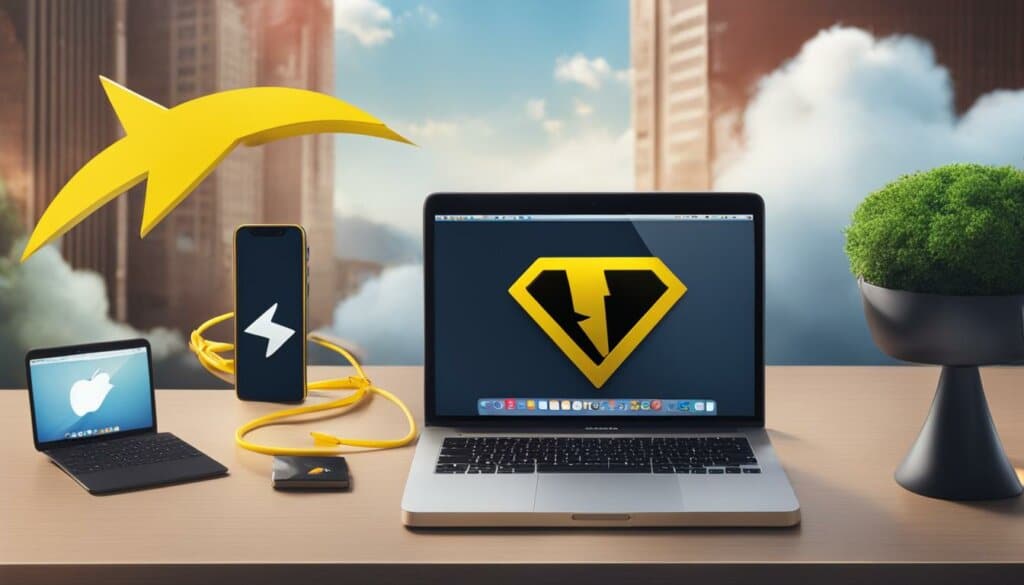
| Steps | Actions |
|---|---|
| Step 1 | Connect your iPhone to your Mac using the charging cable |
| Step 2 | Open Finder on your Mac |
| Step 3 | Select your iPhone from the sidebar in Finder |
| Step 4 | Choose backup options and click “Back Up Now” |
| Step 5 | Wait for the backup to complete |
How to Back Up iPhone to Windows PC Using iTunes
Backing up your iPhone to your Windows PC using iTunes is a straightforward process that ensures the safety of your data. By following the step-by-step guide below, you can easily create a backup of your iPhone and have peace of mind knowing that your valuable information is securely stored on your computer.
Step 1: Connect Your iPhone to Your Computer
To begin the backup process, connect your iPhone to your Windows PC using the charging cord. Ensure that your computer recognizes the device and establishes a stable connection.
Step 2: Open iTunes and Select Your iPhone
Next, open iTunes on your Windows PC. In the upper left section of the iTunes window, you will see a button labeled “Devices”. Click on it and select your iPhone from the dropdown menu. This will open the summary page for your device.
Step 3: Back Up Your iPhone to Your Computer
On the iPhone summary page, locate the “Backups” section. Here, you will find options for backing up your iPhone. Select the option to back up all data on your iPhone to your computer. If you want to ensure additional security for your backup, you can also choose to encrypt it by selecting the appropriate checkbox.
Once you have selected your preferred backup option, click the “Back Up Now” button to initiate the backup process. iTunes will begin creating a backup of your iPhone’s data and save it on your Windows PC. The time it takes to complete the backup process will depend on the amount of data being backed up and the speed of your computer.
It is important to note that during the backup process, it is recommended to keep your iPhone connected to your computer and avoid disconnecting it until the backup is complete. This ensures that all data is properly backed up and reduces the risk of data loss.
Once the backup is finished, you can disconnect your iPhone from your computer. Congratulations, you have successfully backed up your iPhone to your Windows PC using iTunes! Now you can rest assured knowing that your important data is securely stored and ready to be restored whenever needed.
How to Back Up iPhone to Computer Without iTunes or iCloud
Backing up your iPhone to a computer is crucial for ensuring the safety and security of your data. While iTunes and iCloud are commonly used for iPhone backups, there are alternative methods available if you prefer not to use these options. One such method is using third-party software like MobileTrans, which provides a user-friendly and efficient way to back up your iPhone to a computer without iTunes or iCloud.
To back up your iPhone using MobileTrans, follow these simple steps:
- Connect your iPhone to your computer using the charging cable.
- Run the MobileTrans software on your computer.
- Select the data you want to back up, such as contacts, photos, and messages.
- Click the “Backup” button to initiate the backup process.
MobileTrans will handle the rest, ensuring a smooth and successful backup of your iPhone data to your computer. This alternative method offers convenience and flexibility, allowing you to securely store your data without relying on iTunes or iCloud.
Furthermore, using third-party software like MobileTrans can be especially useful if you are switching from an Android device to an iPhone, as it provides seamless data transfer and backup options. It eliminates the need for complicated manual processes and ensures that all your important data is securely transferred to your new iPhone.
| Benefits of Backing Up iPhone to Computer Without iTunes or iCloud | Benefits of Backing Up iPhone to Computer With MobileTrans |
|---|---|
| 1. No reliance on iTunes or iCloud | 1. User-friendly interface |
| 2. Secure and private backup | 2. Fast and efficient backup process |
| 3. No internet connection required | 3. Flexible data selection options |
| 4. Easy data transfer from Android to iPhone | 4. Reliable data storage on your computer |
By utilizing alternative methods like MobileTrans, you can back up your iPhone to a computer without relying on iTunes or iCloud. This allows you to have more control over your data and provides added convenience and privacy. Whether you are switching devices or simply prefer not to use iTunes or iCloud, these alternative methods offer a seamless and efficient way to back up your iPhone to a computer.
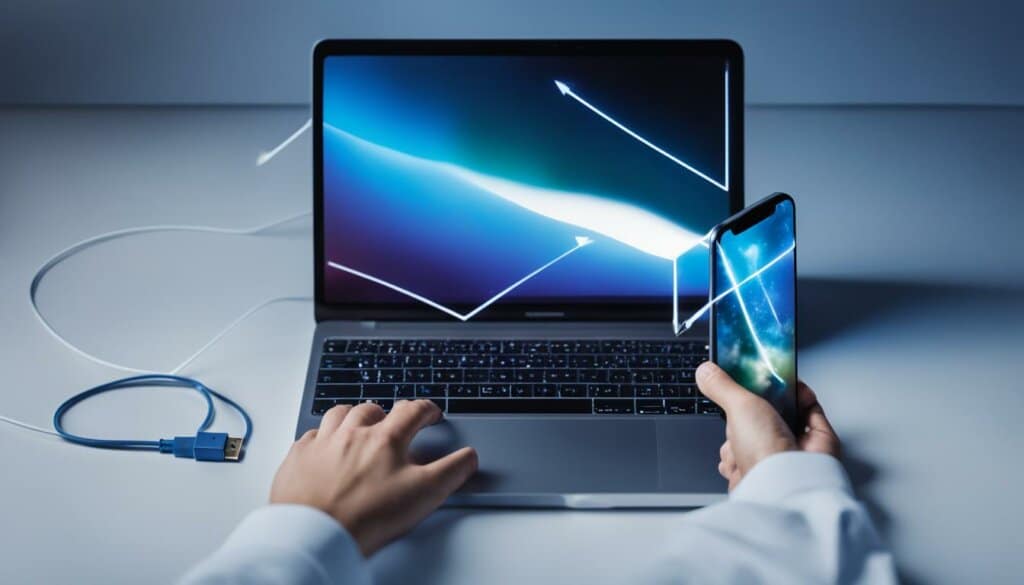
Cloud Storage vs. Local Backup: Which is Better for iPhone Backup
Choosing the right backup method for your iPhone is an important decision that can impact the security and accessibility of your data. Two popular options are iCloud backup and local backup using iTunes or Finder. Each method has its pros and cons, and understanding them will help you make an informed choice.
The Pros and Cons of iCloud Backup
iCloud backup offers the convenience of storing your iPhone data in the cloud, accessible from any device with an internet connection. This means you can easily restore your data even if your iPhone is lost or damaged. Additionally, iCloud backup provides automatic backups, ensuring your data is always up to date.
However, iCloud backup requires a stable internet connection, and larger backups may require a subscription for additional storage. This can be a drawback for users with limited internet access or limited budget. Additionally, relying solely on iCloud backup means you are dependent on Apple’s servers and their security measures. While Apple prioritizes data protection, some users may prefer the added control and peace of mind of a local backup.
The Advantages and Disadvantages of Local Backup
Local backup, using iTunes or Finder, offers several advantages. Firstly, it provides the option to encrypt your backups, adding an extra layer of security to your data. Additionally, local backups are not reliant on an internet connection, allowing you to create backups even when offline. This is particularly useful in areas with limited internet access or when traveling.
However, local backups are stored on your computer, which means they can be lost if your computer crashes or is damaged. It’s crucial to regularly back up your computer to an external hard drive or cloud storage to prevent data loss. Additionally, local backups may require more manual effort compared to iCloud backups, as you need to connect your iPhone to your computer and initiate the backup process.
Choosing the Right Backup Method
The choice between iCloud backup and local backup ultimately depends on your individual needs and preferences. If convenience and accessibility are your priorities, iCloud backup may be the better option for you. On the other hand, if you value control, security, and offline access to backups, local backup is worth considering.
Many users find a combination of both methods to be the ideal solution. By having both an iCloud backup and a local backup, you can enjoy the convenience and accessibility of the cloud while also having a physical copy of your data for added security.
| Pros of iCloud Backup | Cons of iCloud Backup |
|---|---|
| Convenient and accessible from any device with an internet connection | Requires a stable internet connection |
| Automatic backups ensure your data is always up to date | Larger backups may require a subscription for additional storage |
| Can easily restore data if iPhone is lost or damaged | Dependent on Apple’s servers and security measures |
| Pros of Local Backup | Cons of Local Backup |
|---|---|
| Option to encrypt backups for added security | Data can be lost if your computer crashes or is damaged |
| No reliance on internet connection for backups | May require more manual effort compared to iCloud backups |
| Provides offline access to backups |
Restoring iPhone from Backup
Restoring your iPhone from a backup is a straightforward process that allows you to recover your data and settings after a restore or upgrade. Follow this step-by-step guide to restore your iPhone from a backup:
- Connect your iPhone to your computer using the charging cable.
- Open iTunes or Finder on your computer.
- Select your iPhone from the sidebar or upper left section.
- In the device summary page, click on the “Restore Backup” button.
- Choose the backup you want to restore from the list of available backups.
- Click “Restore” and wait for the restoration process to complete.
- Follow any prompts on your iPhone to complete the setup.
It’s important to note that restoring your iPhone from a backup will overwrite any existing data on your device. Ensure that you have selected the correct backup and have backed up any new data since the backup was created.
Restoring from a backup is especially useful when setting up a new iPhone, recovering from a software issue, or transferring data to a replacement device. By regularly backing up your iPhone, you can ensure that you always have a recent backup to restore from when needed.
“Restoring your iPhone from a backup is like pressing the rewind button on your device. It allows you to go back to a specific moment in time and reclaim your data and settings. It’s a powerful tool that gives you peace of mind, knowing that even if something goes wrong, you can easily restore your iPhone to its previous state.”
Additional Tips for iPhone Backup and Restoration
When it comes to backing up and restoring your iPhone, there are a few expert tips and best practices that can help you maximize efficiency and ensure a smooth process. By following these recommendations, you can enhance the security of your data and streamline your backup and restoration workflows.
Regularly Update Your Software
To ensure compatibility and stability during the backup and restoration process, it’s important to regularly update your computer’s operating system and iTunes/Finder software. By keeping your software up to date, you can take advantage of the latest features and improvements that enhance the backup and restoration experience.
Disable Find My iPhone and Activation Lock
Prior to restoring your iPhone, it’s crucial to disable the Find My iPhone feature and Activation Lock. These security features can prevent unauthorized access to your device and may interfere with the restoration process. By disabling them beforehand, you can avoid any potential complications and ensure a seamless restoration.
Keep Track of Your Backups
It’s essential to keep track of your backups, including the date and time they were created. This way, you can easily select the correct backup for restoration, especially if you have multiple backups stored on your computer or in iCloud. By organizing and labeling your backups, you can save time and avoid any confusion during the restoration process.
Consider Third-Party Software
If you’re looking for a more convenient and efficient backup and restoration solution, consider using third-party software like MobileTrans. These tools offer user-friendly interfaces and additional features that can simplify the backup and restoration process. Research and choose a reputable third-party software that suits your specific needs and preferences.
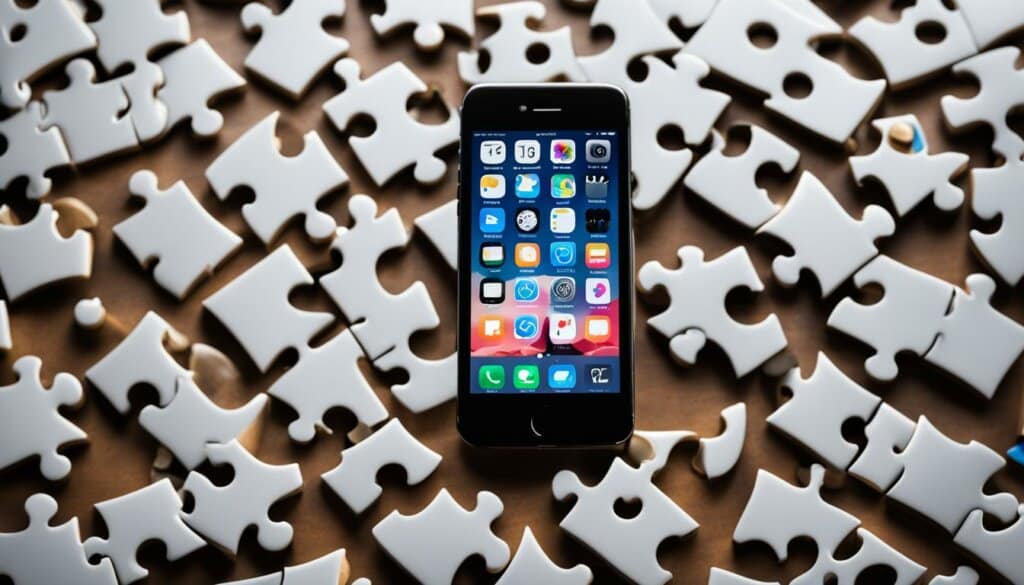
In summary, by following these expert tips and best practices, you can enhance your iPhone backup and restoration experience. Regularly updating your software, disabling Find My iPhone and Activation Lock, keeping track of your backups, and considering third-party software are all key steps in maximizing efficiency and ensuring the security of your valuable data. Take the time to implement these recommendations, and you can rest easy knowing that your iPhone is backed up and ready to be restored whenever necessary.
Conclusion
In conclusion, backing up your iPhone to your computer is a vital step in safeguarding your data and ensuring its security. Whether you choose to utilize iTunes, Finder, or third-party software, regular backups are crucial for preventing the loss of data and effortlessly restoring your iPhone when necessary. By following the comprehensive step-by-step guides and implementing the expert tips outlined in this article, you can confidently protect your iPhone data and preserve your precious memories. Don’t delay – commence backing up your iPhone to your computer today!
Regular backups are of paramount importance as they allow you to easily recover data in the event of device loss, damage, or software issues. By creating a backup, you’ll have peace of mind knowing that your valuable files, contacts, photos, and other data will never be lost. Remember to update your computer’s operating system and software regularly, disable Find My iPhone and Activation Lock before restoration, and keep track of your backups to ensure a smooth and successful restoration process. Additionally, consider exploring third-party software for more convenient and efficient backup and restoration options.
With the multitude of backup methods available, you can choose between cloud storage and local backup based on your individual needs and preferences. iCloud offers the advantage of accessibility from anywhere, but it requires an internet connection and potentially a subscription for additional storage. On the other hand, local backup methods like iTunes or Finder provide added security and encryption options, but they are reliant on your computer and susceptible to loss if your computer crashes. Take into consideration your specific requirements when selecting the ideal backup method for your iPhone.
In conclusion, by consistently backing up your iPhone to your computer, you can ensure the safety and longevity of your data. Regular backups provide a safety net against unforeseen circumstances and enable you to restore your iPhone effortlessly. Embrace the simplicity and security of iPhone backup methods, and start prioritizing regular backups today!
FAQ
How can I back up my iPhone to my computer?
You can back up your iPhone to your Mac using Finder or to your PC using iTunes. Alternatively, you can use third-party software like MobileTrans for backup.
Why is backing up my iPhone important?
Backing up your iPhone ensures the security and safety of your data in case of device loss, damage, or software issues.
How can I back up my iPhone to a Mac using Finder?
Connect your iPhone to your Mac using a charging cable, open Finder, select your iPhone from the sidebar, and click the “Back Up Now” button in the General tab.
How can I back up my iPhone to a Windows PC using iTunes?
Connect your iPhone to your Windows PC using a charging cord, open iTunes, select your iPhone from the upper left section, and click the “Back Up Now” button in the Backups section.
Are there alternative methods to back up an iPhone without using iTunes or iCloud?
Yes, you can use third-party software like MobileTrans to easily back up and restore data on your iPhone with just a few clicks.
What are the pros and cons of cloud storage vs. local backup for iPhone backup?
Cloud storage allows access to your backup from anywhere but requires an internet connection and may require a subscription. Local backup provides added security but relies on your computer and may be lost if your computer crashes.
How can I restore my iPhone from a backup?
Connect your iPhone to your computer, open iTunes or Finder, select your iPhone from the sidebar, choose the option to restore from a backup, select the desired backup, and click the “Restore” button.
What are some additional tips for iPhone backup and restoration?
Regularly update your computer’s operating system and backup software, disable Find My iPhone and Activation Lock before restoration, keep track of your backups, consider third-party software, and test the restoration process.



